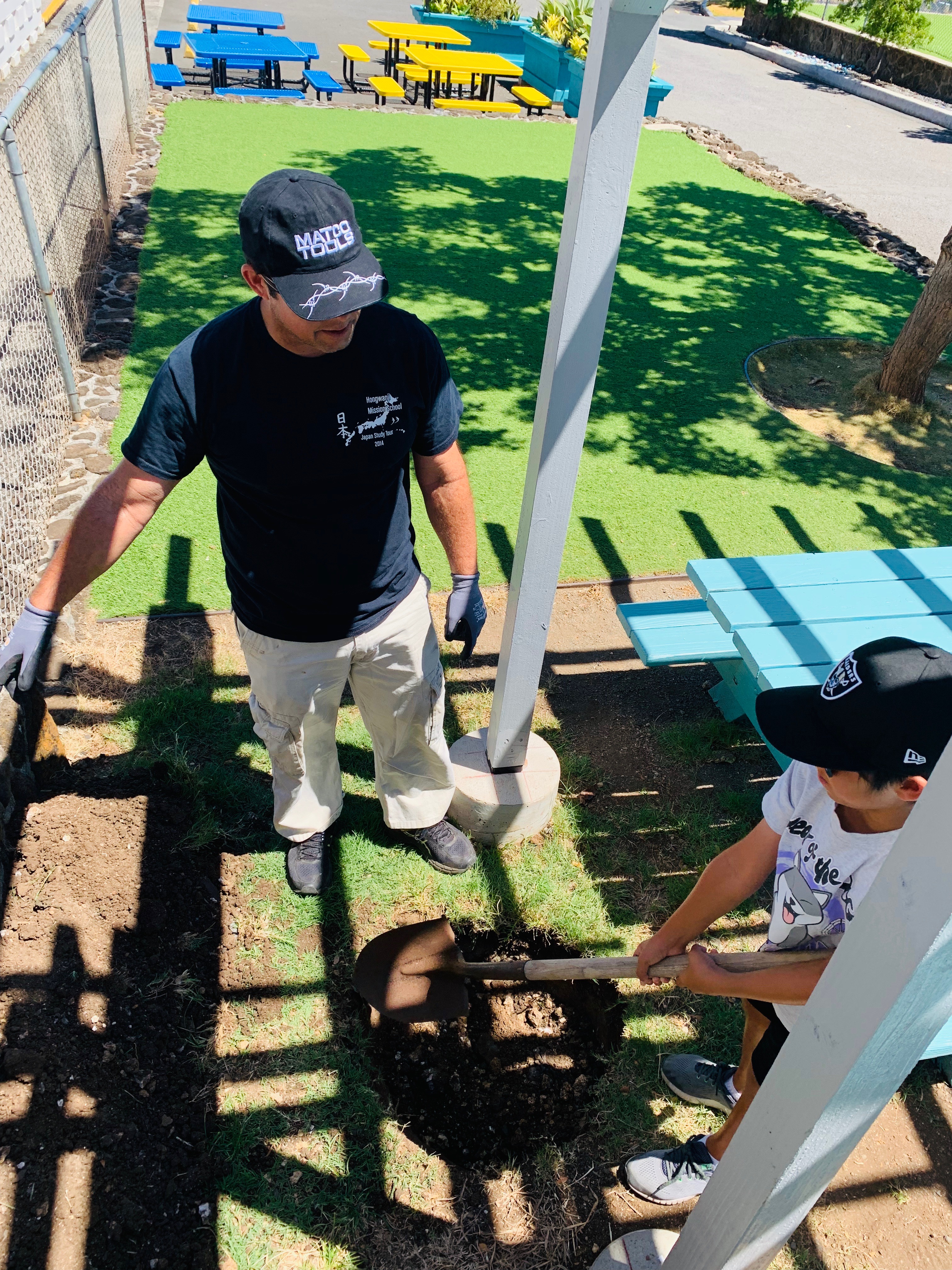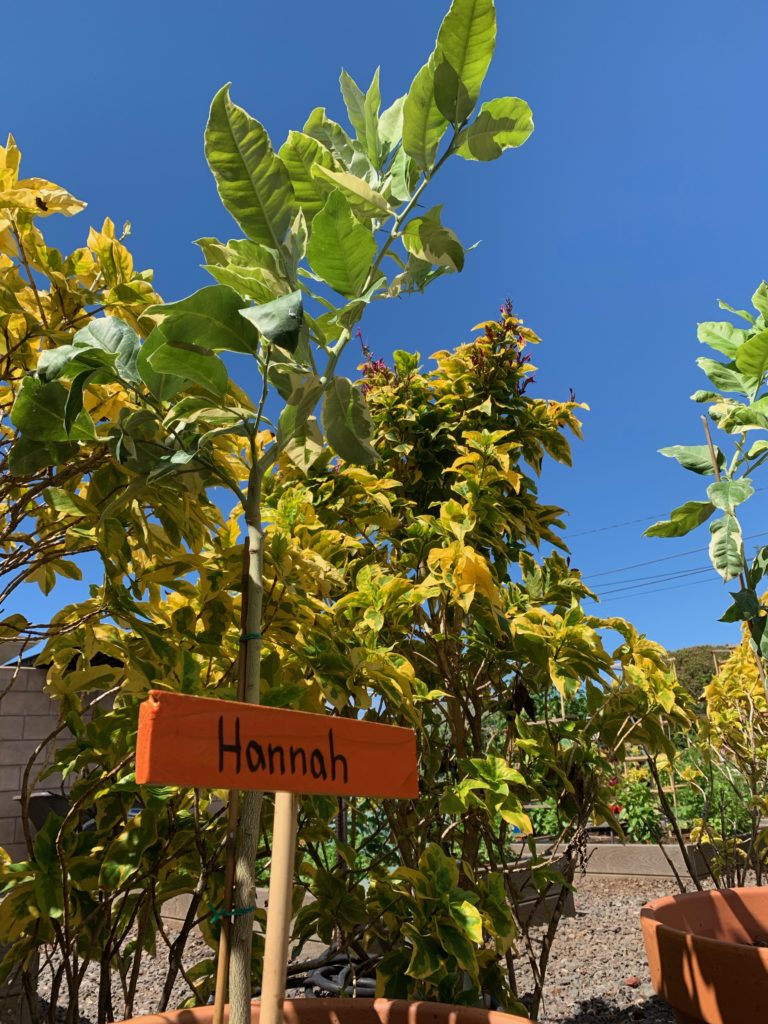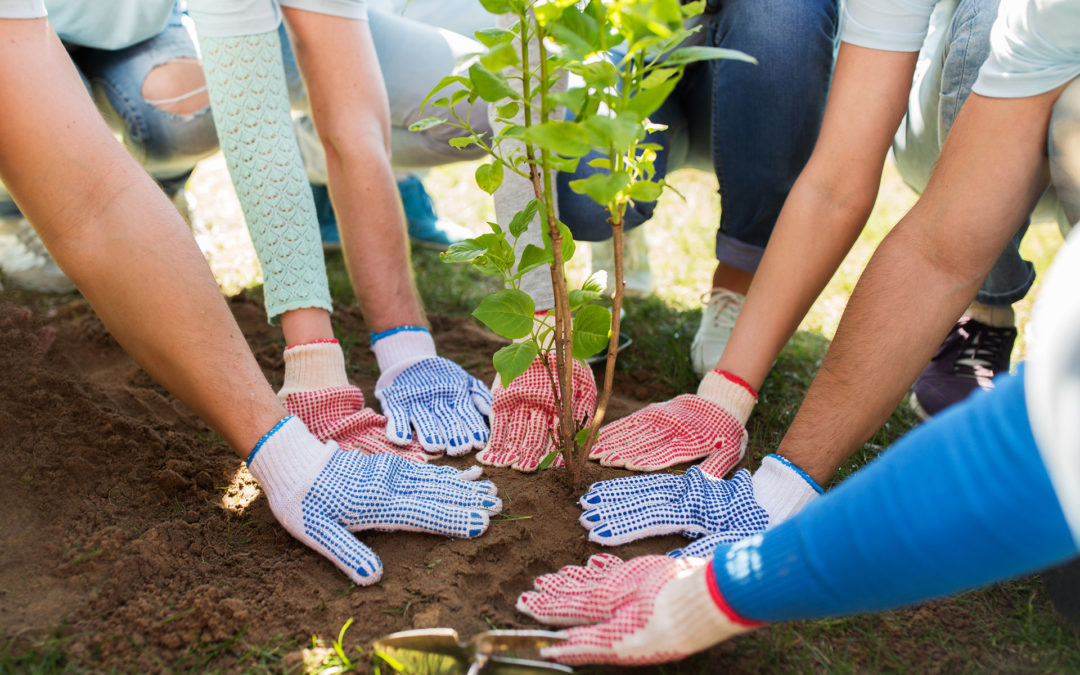Over the past couple years, we’ve partnered with over 60 schools to plant lemon trees in pots and in the ground, as well as to build pergolas and trellises. We’re also researching best practices for orchard growing lemon trees in our home state of Hawaiʻi. Through it all, we’ve learned a lot, and we want to share it with you!
Here are our top five tips for planting lemon trees on school campuses:
1. Get Well-Drained Locations for Lemon Trees
Above all else, lemon trees don’t like to sit in water. Well-drained soils are necessary to avoid root rot. And since lemons are extremely drought-tolerant, they don’t have to be watered much after the first year. (While they take root during the first year, be sure to water them. Our curriculum has watering amounts and best practices.)
Interestingly, lemon orchards are typically planted on hillsides because rain water sheets off quickly. This helps to avoid excessive water. In low-lying areas, they are commonly planted on top of mounds. This allows water to run out of the mound and provides a nice dry location for a tree.

2. Full-Sun & Reflection Walls Make Lemons Happy
Lemon trees love heat and sun. The more, the better. Find the sunniest locations and consider planting next to walls that reflect sun heat back onto trees. If you plant by a wall, keep the tree at least 15 feet away that it has room to grow at maturity. This will also keep roots from growing under walls or foundations.
3. Lemons Like Low-Wind Locations
Lemons don’t like windy locations. Ideal locations are sheltered by buildings, walls, natural formations. You can also plant wind screen trees upwind or create wind screen structures.
In some cases, we’ve seen wind screens help for the first couple years while trees mature. When the trees are larger, wind is less of a problem because their canopies become longer and flatter. This makes them less susceptible to wind shear.

Hongwanji School built a 4 lemon pergola in a well-drained, sunny, wind-protected area.
4. 20′ on Center, 15′ Away from Walls, 7′ Clear Pergola Height
If you plant multiple trees in a location like a row or orchard, planting 20′ on center is a good rule for optimal fruit production. This allows for the canopies to fully mature without conflicting with each other. But if you are using lemons ornamentally, there are no hard and fast rules because lemons prune well. In this case, going tighter at 15′ or even 10′ is fine. For wall locations, try to stay 15′ way from walls so roots don’t conflict with walls or foundations.
If you plan to build a pergola (an overhead structure to support heavy fruit and make a shade area), consider making the clear height 7′ so that students can pick under-hanging fruit without having to get on ladders. At 7′, you can still walk under the shade structure.
Of course you should check your local school and building requirements, but the goal is to keep lemons at a safe height for humans and create a shady environment. By keeping the pergola lower, it also takes less time to get a tree to canopy over and create shade.
5. Name Your Trees So Students Take Ownership
One of the best ways to ensure that students will take care of the lemons is to let them name the trees. When they feel a sense of ownership, they’re be more likely to take long-term interest in their care. You can also consider running challenges to see who can produce the more flowers, fruit grow the fastest, and more. Get creative!

Sacred Hearts 2nd Grade Gardeners Club named their Project Lemon Tree friends.
During the first year of growth, you’ll want to make sure your lemon trees are consistently watered so they have a chance to take root. In particular, make sure that your summer watering is covered. It’s easy to forget over summer break that there are living things on a campus. After that, less water is needed.
See our PLT curriculum book for care plans that include watering, weeding, pruning, fertilizing and pest control. Our curriculum also includes signup sheets with seasonal instructions for students to care for trees each month.
What other tips and tricks have you discovered for planting lemon trees on your school campus? We’d love to hear in the comments below or through our contact page!



Recent Comments